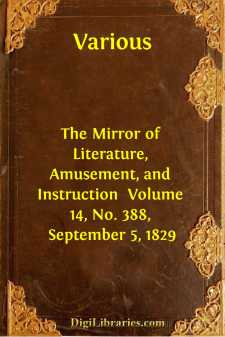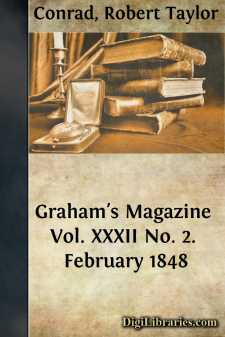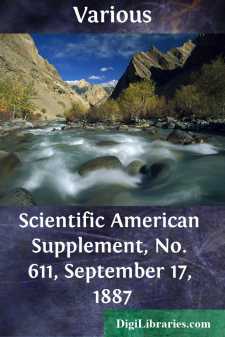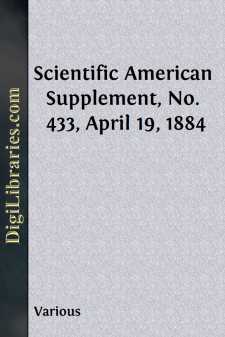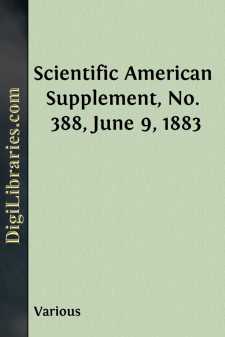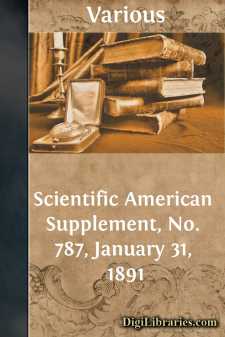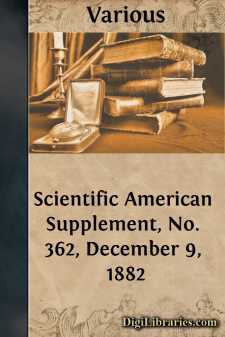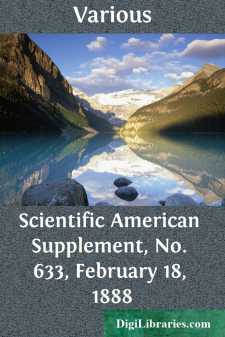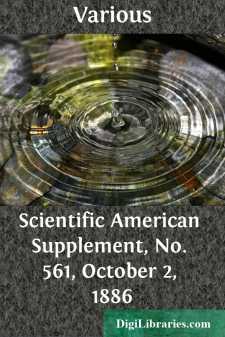Periodicals
- Art 27
- Children's periodicals 59
- Entertainment 5
- Food/Wine 2
- Games/Humor 455
- General 661
- Health 1
- History 53
- House/Home 1
- Regional 62
- Science/Nature 118
- Transportation 10
Periodicals Books
Sort by:
by:
Various
THE STORY OF JOSIAH HENSON No one ever uttered a more forceful truth than Frederika Bremer when she said in speaking to Americans: "The fate of the Negro is the romance of your history." The sketches of heroes showing the life of those once exploited by Christian men must ever be interesting to those who would know the origin and the development of a civilization distinctly American. In no case...
more...
by:
Various
ST. DUNSTAN'S, FLEET STREET. No church in London is perhaps better known than the above, which is distinctively called Saint Dunstan's in the West. External elegance has little to do with this celebrity, which has been acquired by the two wooden figures placed on a pediment in front, representing savages, who indicate the hours and quarters by striking a bell with their clubs: this has caused...
more...
The Manor of Stoke, with its magnificent mansion and picturesque park, is situate near the village of Stoke Pogeys, in the county of Buckingham, four miles north-west of Windsor. About two miles distant from Stoke lies the village of Slough, rendered famous by the residence of the celebrated astronomer, Sir William Herschel, and a short way further, on a gentle slope continued the whole way from Stoke,...
more...
by:
Various
The inauguration of the statue of Philip Lebon, the inventor of lighting by gas, occurred on the 26th of June, at Chaumont, under the auspices of the Technical Gas Society of France. The statue, which we illustrate herewith, is due to the practiced chisel of the young sculptor Antide Pechine, who has perfectly understood his work, and has represented the inventor at the moment at which he observes a...
more...
by:
Various
THE FRENCH SCIENTIFIC STATION AT CAPE HORN. In 1875 Lieutenant Weyprecht of the Austrian navy called the attention of scientific men to the desirability of having an organized and continual system of hourly meteorological and magnetic observations around the poles. In 1879 the first conference of what was termed the International Polar Congress was held at Hamburg. Delegates from eight nations were...
more...
by:
Various
FARCOT'S IMPROVED WOOLF COMPOUND ENGINE. In a preceding article, we have described a ventilator which is in use at the Decazeville coal mines, and which is capable of furnishing, per second, 20 cubic meters of air whose pressure must be able to vary between 30 and 80 millimeters. In order to actuate such an apparatus, it was necessary to have a motor that was possessed of great elasticity, and...
more...
by:
Various
STEAM ENGINE VALVES. By THOMAS HAWLEY. In considering the slide valve in its simple form with or without lap, we find there are certain limitations to its use as a valve that would give the best results. The limitation of most importance is that its construction will not allow of the proper cut off to obtain all the benefits of expansion without hindering the perfect action of the valve in other...
more...
by:
Various
GUSTAVE TROUVÉ. The accompanying portrait of M. Gustave Trouvé is taken from a small volume devoted to an account of his labors recently published by M. Georges Dary. M. Trouvé, who may be said to have had no ancestors from an electric point of view, was born in 1839 in the little village of Haye-Descartes. He was sent by his parents to the College of Chinon, whence he entered the École des Arts et...
more...
by:
Various
THE COMPOUND STEAM TURBINE. Last year the whole of the lighting of the Newcastle Exhibition was effected by the agency of seventeen of these motors, of which four were spare, giving in the aggregate 280 electrical horse power. As the steam was provided by the authorities of the exhibition, it was good proof to the public that they had satisfied themselves that the consumption would not be extravagant...
more...
by:
Various
A huge agave, or century plant, is now blooming at Auburn, N.Y. A few days ago the great plant became tinged with a delicate yellowish-white color, as its 4,000 buds began to develop into the full-blown flowers, whose penetrating fragrance, not unlike that of the pond lily, now attracts swarms of bees and other insects. The plant was purchased in 1837 by the owner, and was then twelve years old. For...
more...



